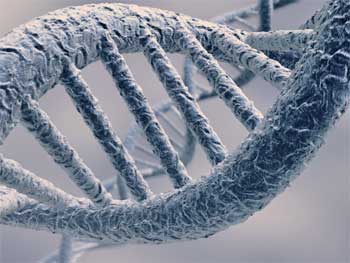
Question for I.D.ers (in several parts):
How much “waste” and “junk” is there in nature?
Do you accept that “pseudogenes” exist inside all animal genomes? What proportion of the human and/or chimp genome contains them? What is the proportion of pseudogenes to functional genes?
Do you accept that “endogenous retroviral DNA” exists inside all animal genomes? What proportion of the human and/or chimp genome contains “endogenous retroviral DNA?” What is the proportion of the genomes that codes for endogenous retroviral DNA, compared with the proportion of the genome that codes for functional genes?
Do you accept that remnants of misplaced “telomeric chromosomal regions” and remnants of misplaced “centromeric regions” exist inside the human chromosome number two? If you agree both things exist inside the human chromosome number 2, do you think they constitute evidence of a possible “sloppy” fusion of chromosomes in our past ancestors? (Note: When the human chromosome number 2 and the chimpanzee chromosomes 2 and 3 are compared, their overall lengths and the individual bands of human chromosome number 2, and chimpanzee 3 and 4, line up with one another. And, there are remnants inside the longer human chromosome number 2 of “teleomeric regions” and “centromeric chromosomal material,” found in the wrong places inside the chromosome number 2, “as if” the human chromosome number two were formed by the “sloppy” fusion of two separate chromosomes.)
On rare occasions a whale is born with (atavistic) hind limbs. Would you consider those to be a “waste” or “junk?” (Or do you deny with AIG [Answers in Genesis] that such atavistic hind limbs exist on modern day whales?)
A single bacterial cell that divides every twenty minutes, will multiply to a mass four thousand times greater than the earthʼs in just two days. That doesnʼt happen, because of the inconceivably huge death rate of bacteria. If all the eggs from one mother housefly lived, she would produce more than five trillion offspring in just one season. A single oyster, left to its own devices, produces more than one-hundred-twenty-five million eggs in a season. A female sea turtle lays a hundred or more eggs, but after they hatch [and not all do] in a nest buried beneath the sand on the beach, only a handful of baby sea turtles make it to the safety of the ocean. About one hundred million sperm cells are found in each cubic centimeter of human ejaculate. Yet only one sperm lives to fertilize the femaleʼs egg. The rest die. And many fertilized eggs never reach maturity. There are equally bountiful numbers from the world of seed-bearing plants. Among the young of both plants and animals, a large percentage of them are taken by disease and or infected by parasites. In fact, two hundred and fifty years ago one-half of all children born died before reaching the age of seven. Similar figures, or worse, are true of many other animal and plant species as well. Could any of this massive fecundity and death of most of the young of animals and plants be indicative of “waste?”
When asteroids have struck the earth throughout geologic time and killed billions of creatures and caused mass extinctions of species, could that be indicative of “wastefulness” of any kind?
| Help Ed score 100% on YSlow. Server Fees & 🍪-free *CDN. This page was designed and tested by Night Owl using GTMetrix on 6/26/2017. | |||
| *Content Delivery Network | PageSpeed (100%) | YSlow (99%) | Onload Time 0.392s Fully Loaded Time 1.3s Pagespeed 100% YSlow 99% |